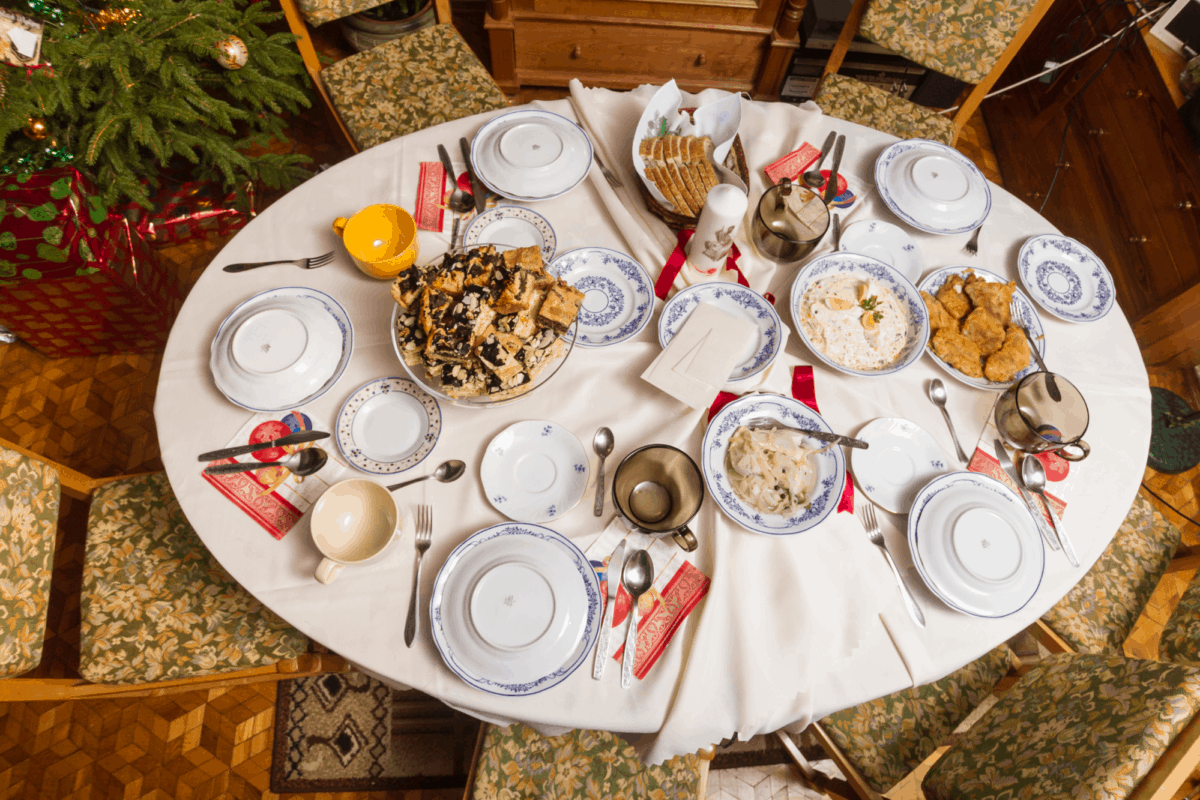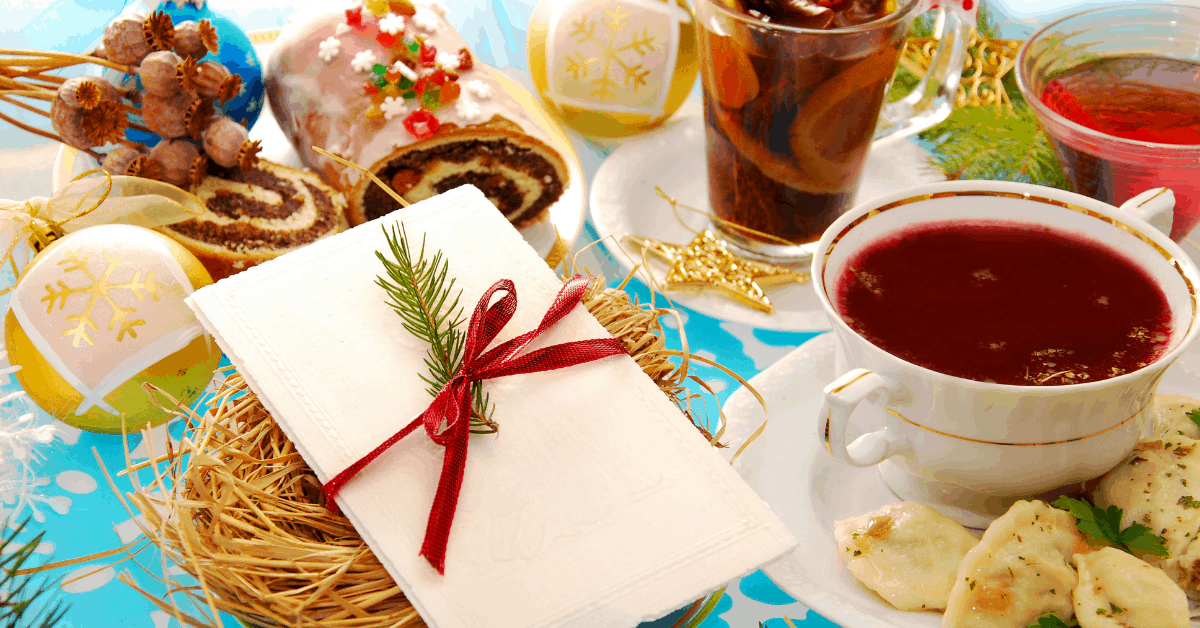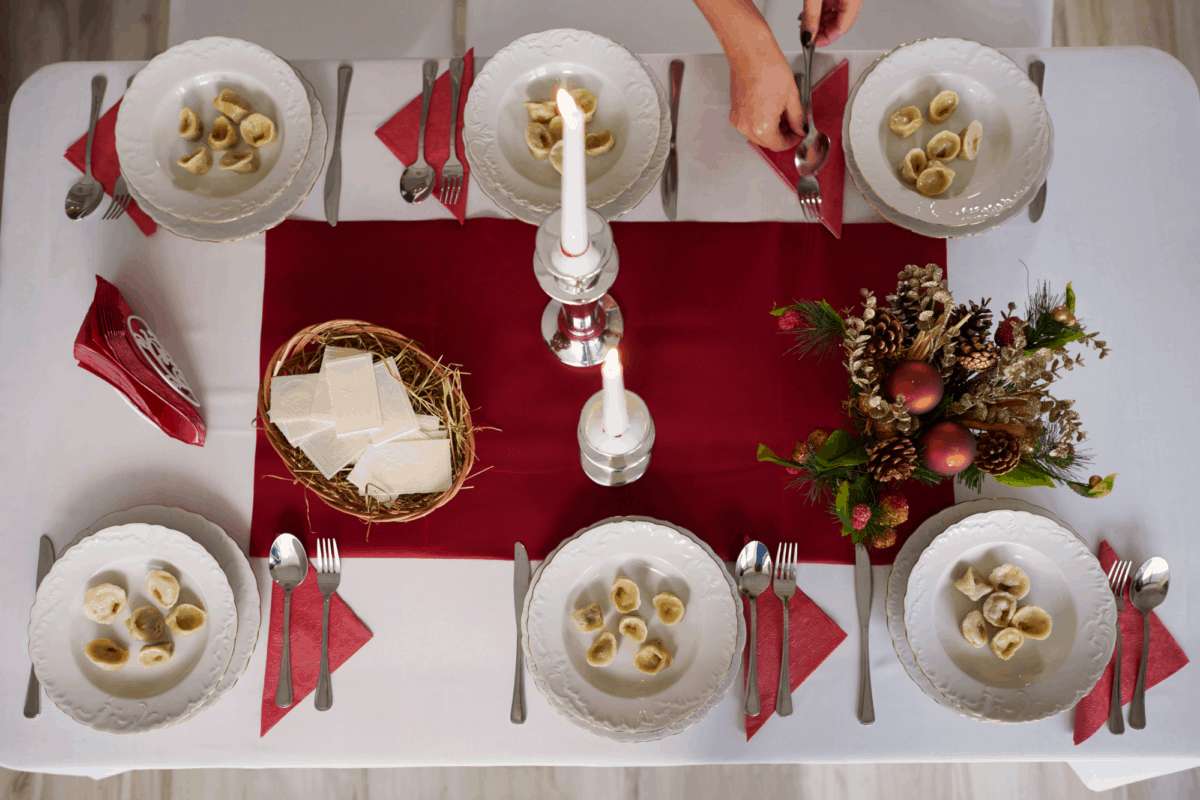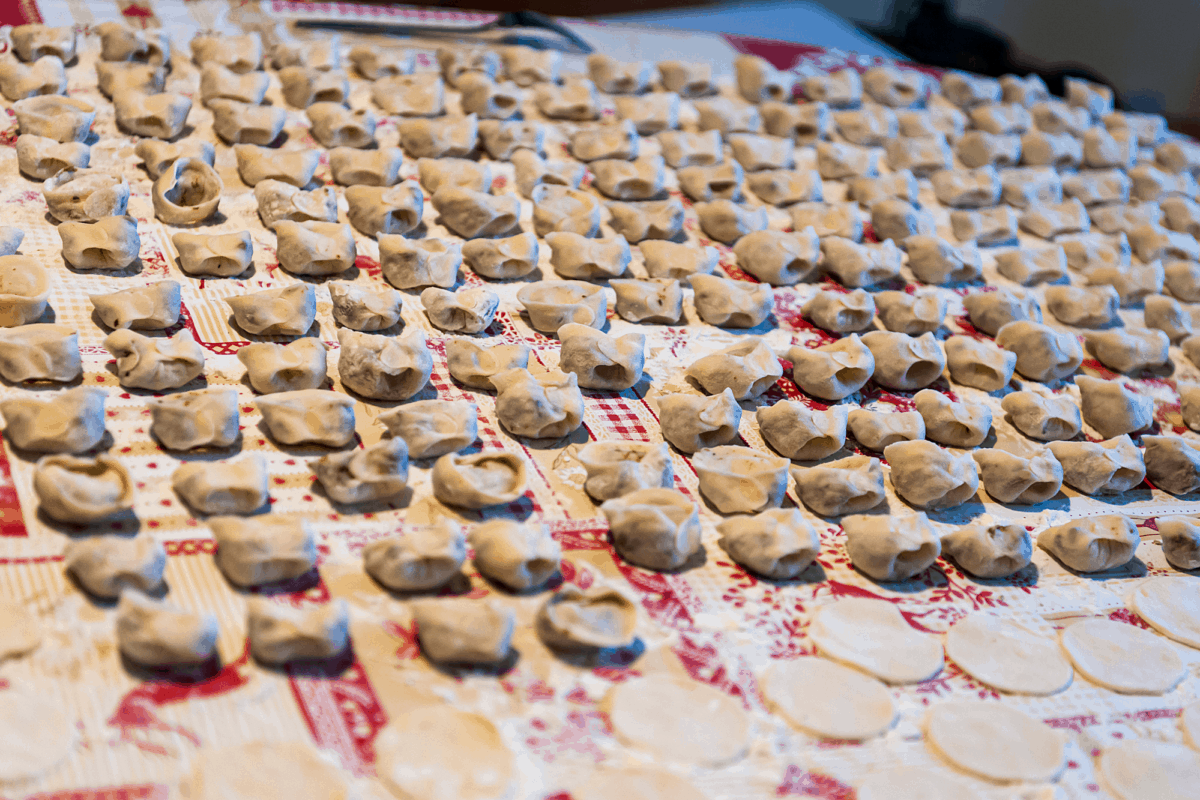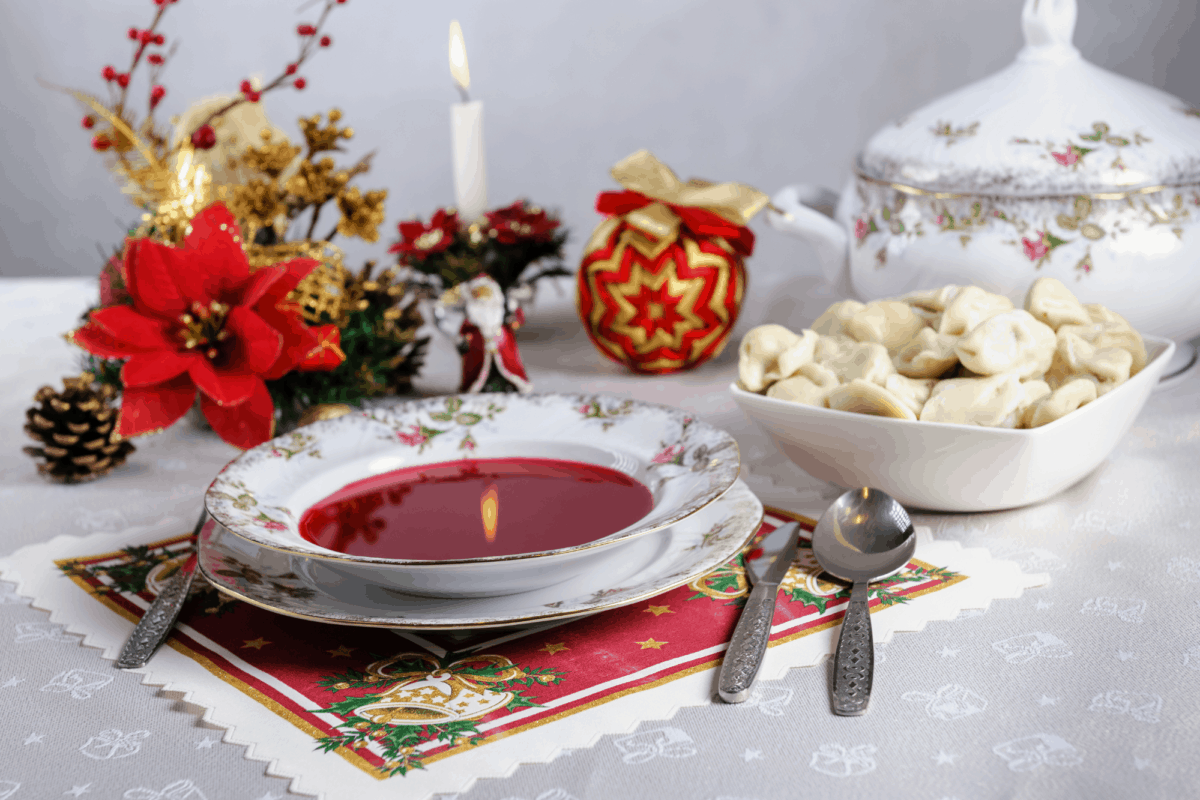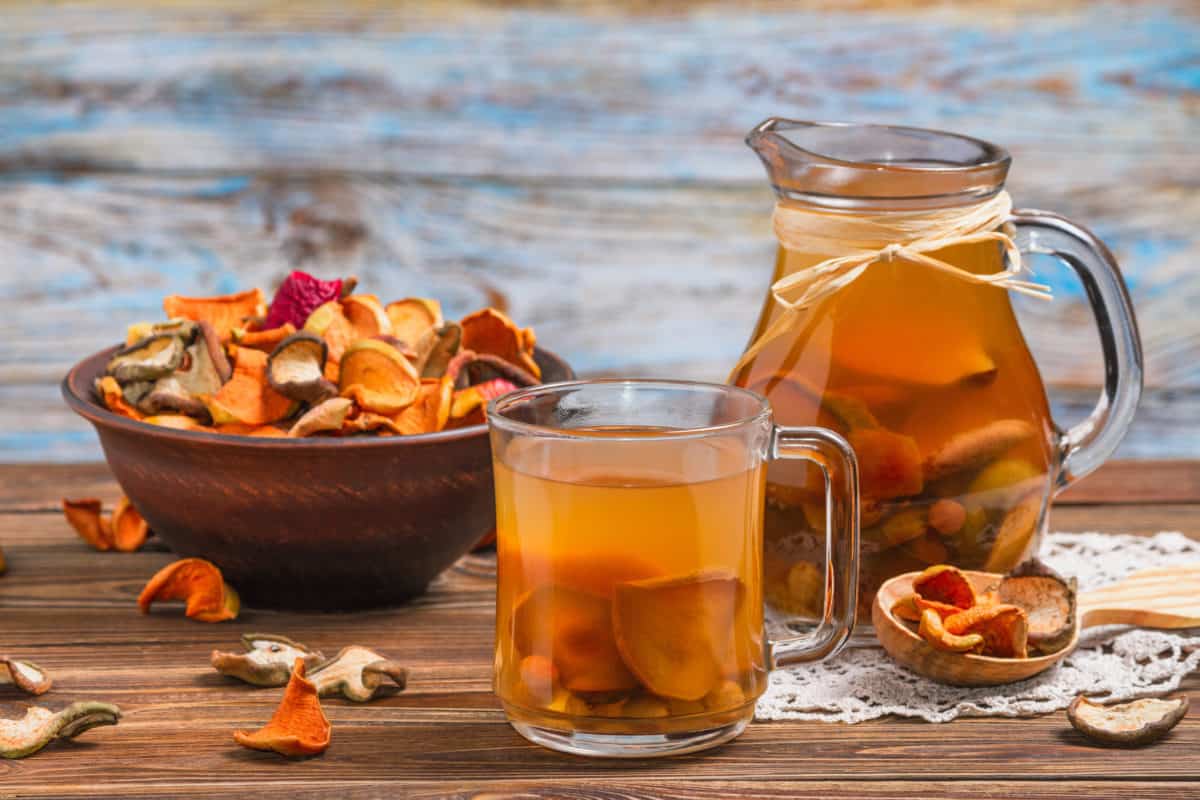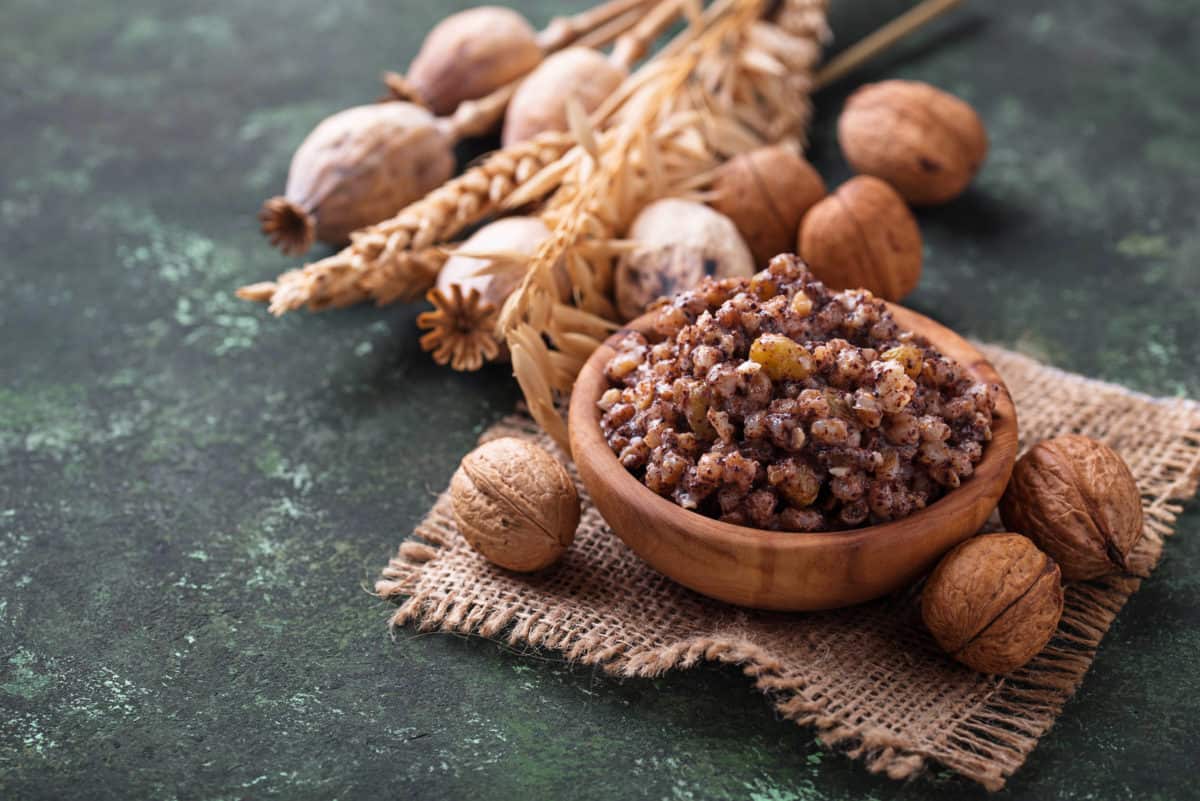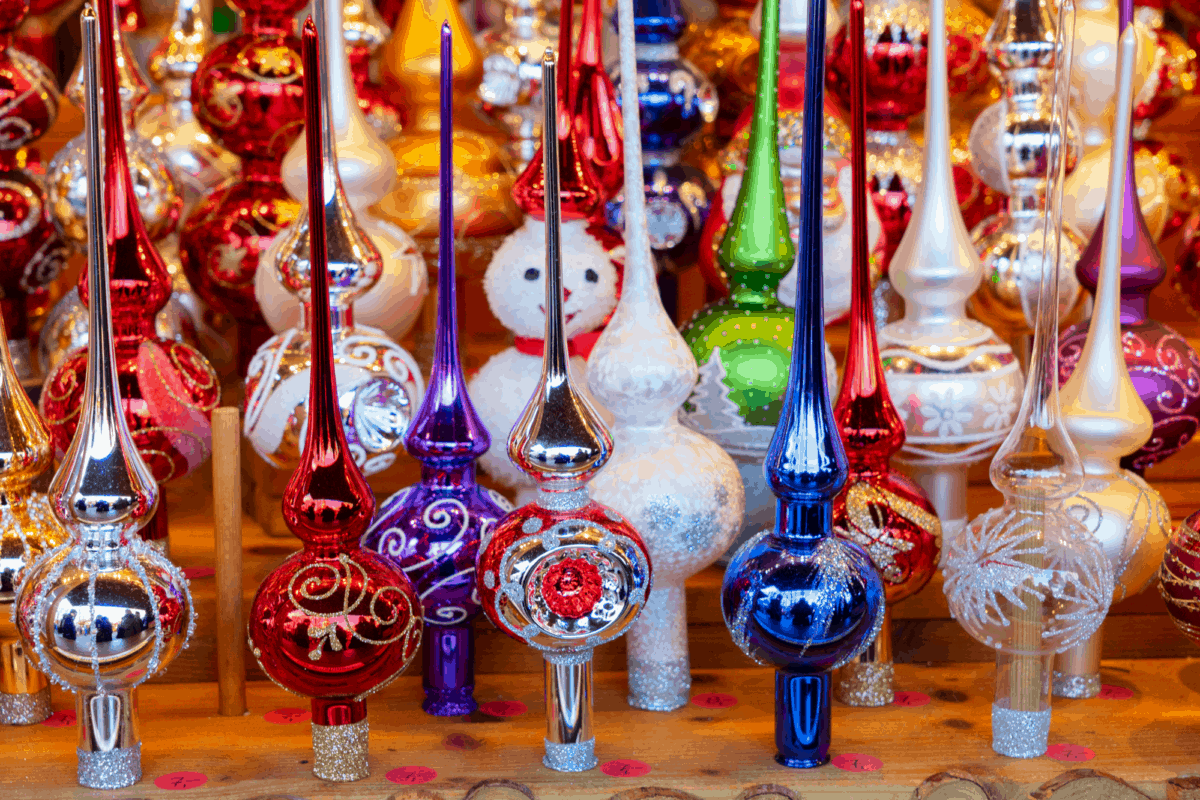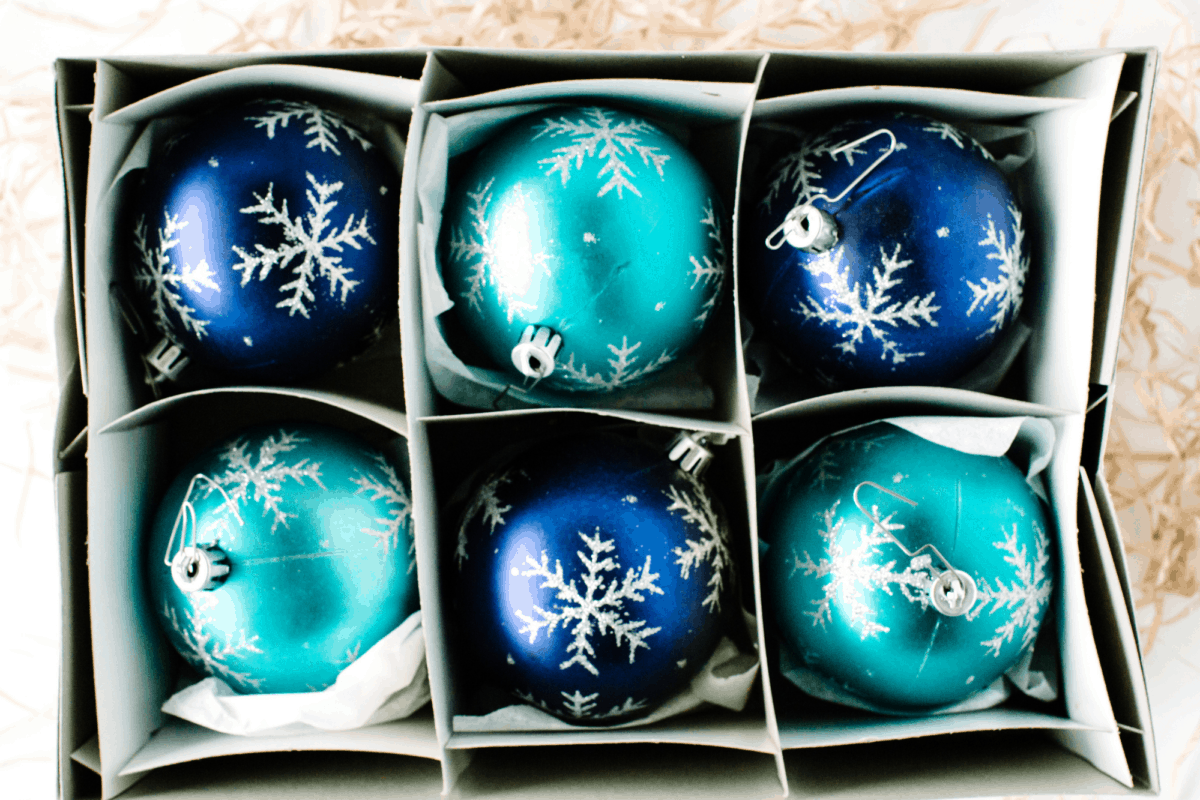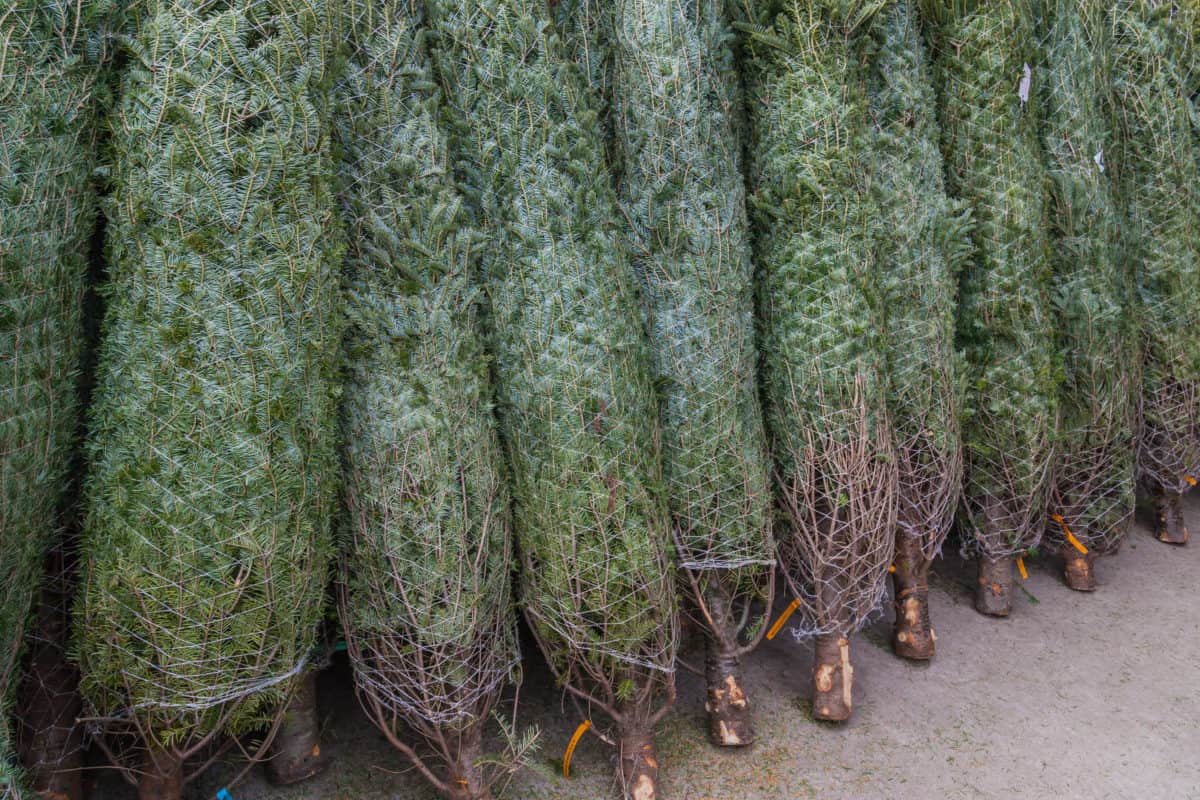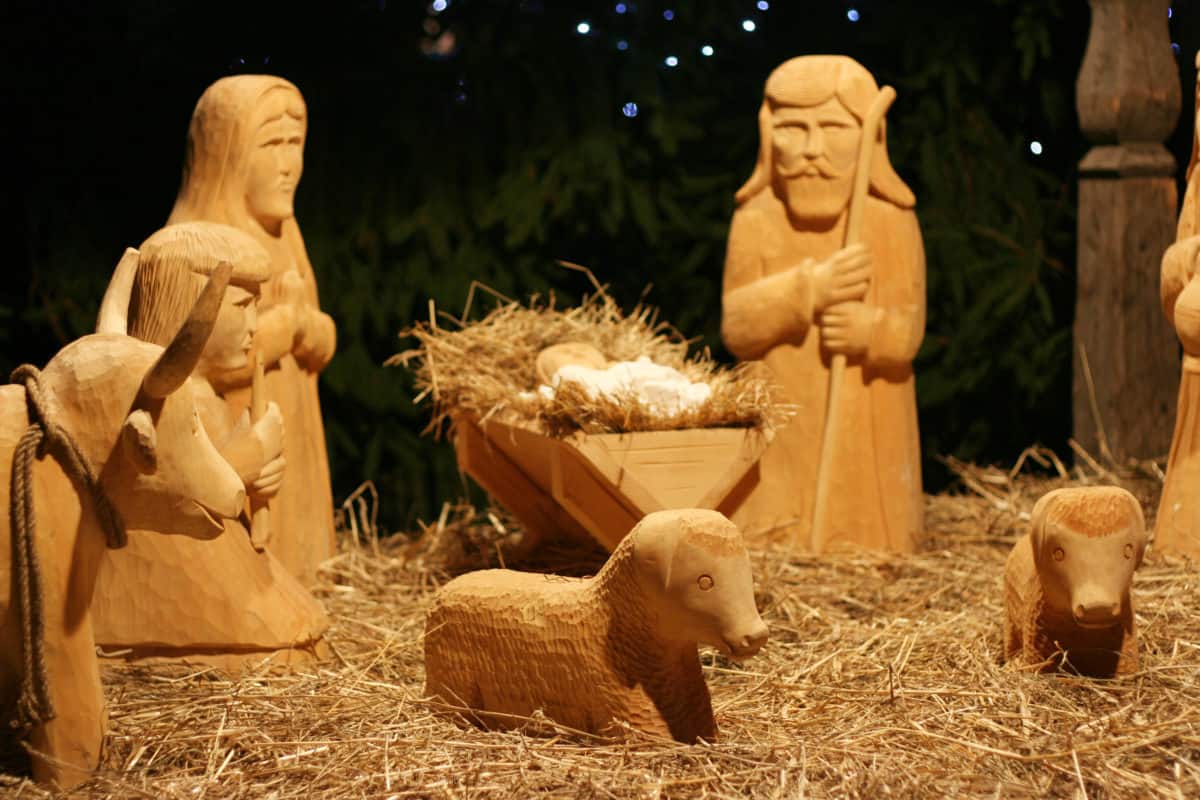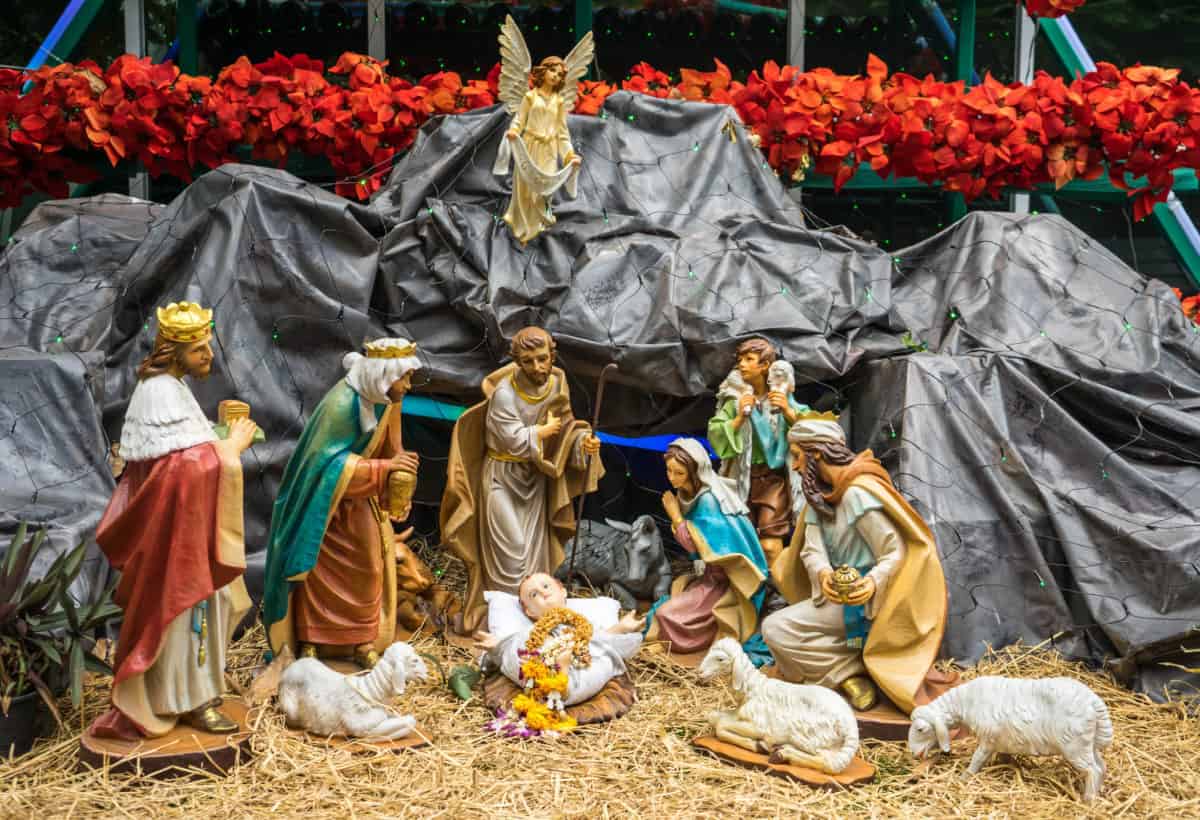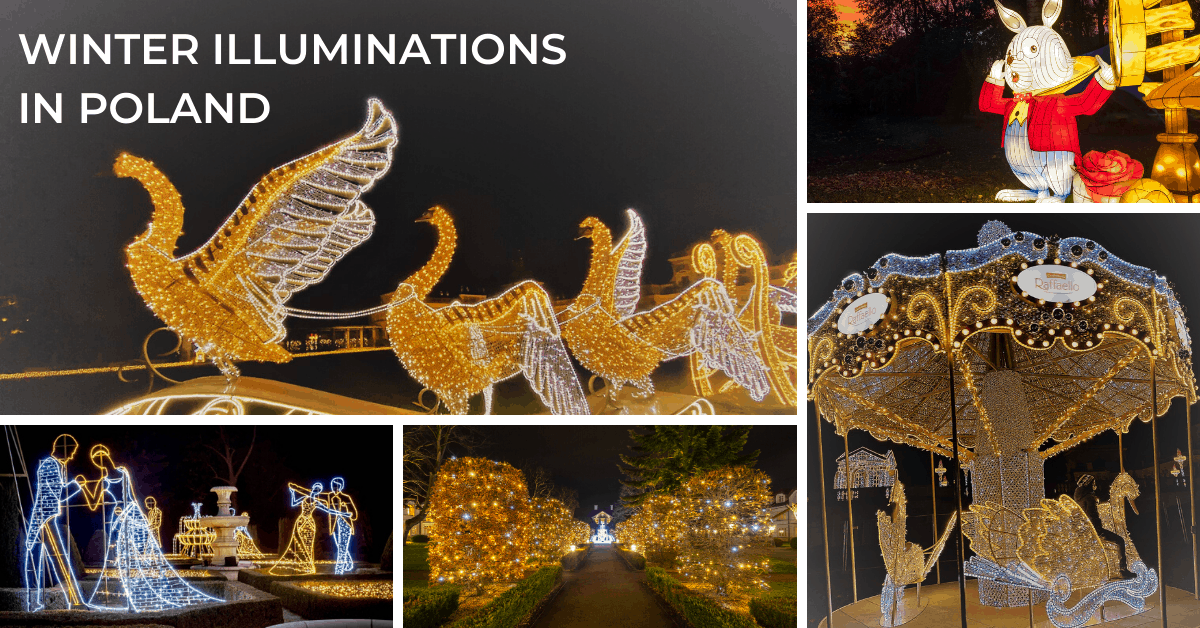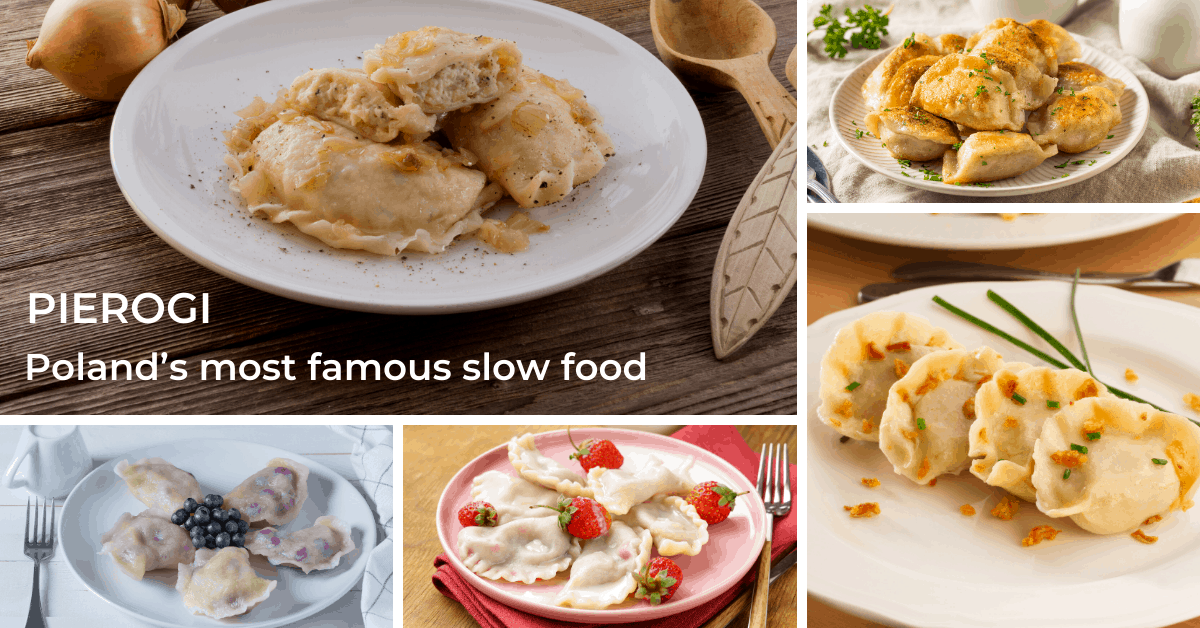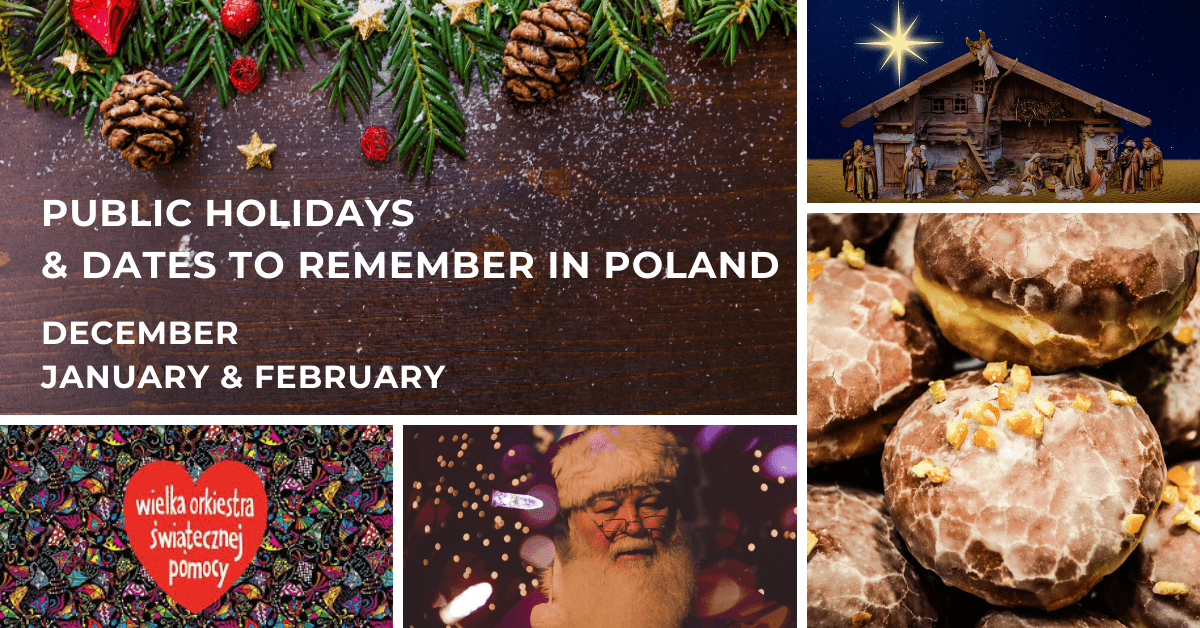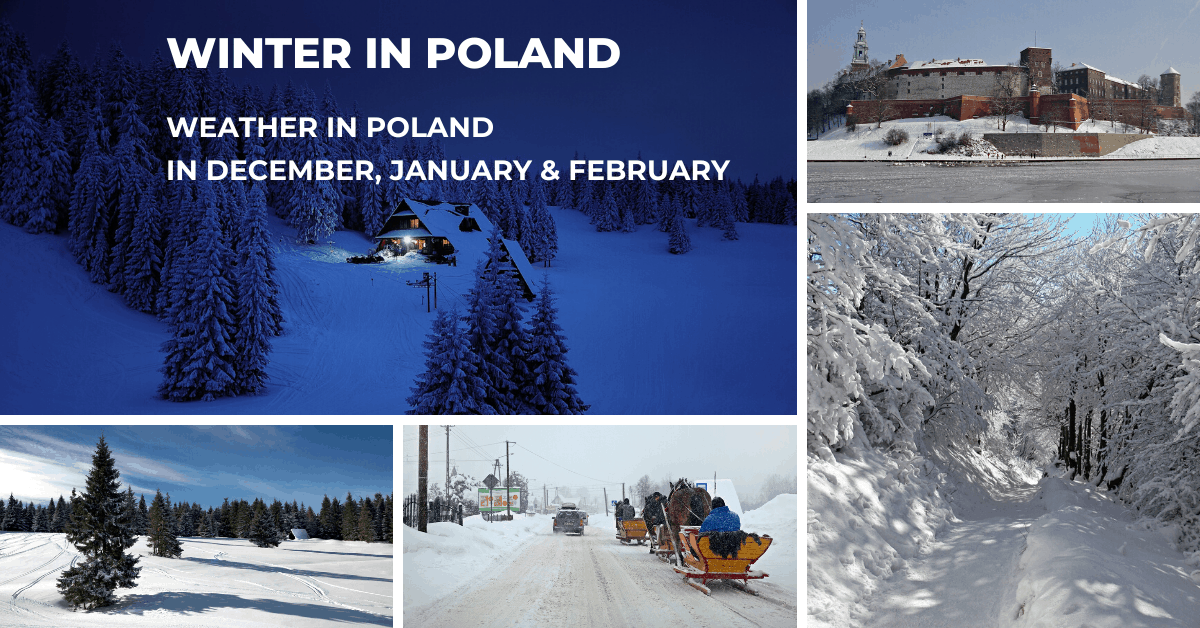Christmas in Poland: traditions, family, and… food
Christmas Eve in Poland (Wigilia), December 24
Christmas Eve Dinner – kolacja wigilijna – is the most important Christmas celebration in Poland.
Christmas Eve Dinner starts in the late afternoon or in the evening, depending on the family (some people visit 2 or even more families during Christmas Eve, having 2 or more dinners). The tradition requires that the dinner can start only after the first star is visible in the sky. Kids keep looking out the window waiting for the first star (children want to start dinner as soon as possible to proceed after to the next part – Christmas gifts).
Dinner starts with sharing the Christmas wafer (opłatek – baked from wheat flour and water, usually rectangular). Each guest receives a piece of a wafer and then people share it with one another eating a piece of the wafer and making wishes (wishes usually refer to the previous and next year). There is also a special pink wafer for animals. The tradition says that animals are endowed with the power of human speech on Christmas Eve.
One of the greatest Polish Christmas traditions is to prepare an extra seat at the table. One place more than the number of people gathered is placed on the festive table (including a plate and cutlery). According to tradition, an additional seat at the Christmas Eve table is intended for an unannounced and unexpected guest. The unannounced guest has a symbolic meaning – it is someone in need, poor, lost, lonely, or without family. This tradition is to remind us and to oblige us to think about others, about those in need. And to help others during the holidays, but not only. In this way, we can also express the memory of our loved ones who have passed away. The empty plate can also symbolize someone from family or friends with whom we cannot meet this year…

The tradition in Poland requires that the Christmas Eve dinner (on December 24) includes twelve courses (yes, TWELVE!!!). The host of the Christmas Eve dinner may be held accountable by children for this tradition;) This is where creative accounting comes in handy – 12 dishes may include for example bread, side dishes, or desserts. Everyone who associates Polish cuisine with meat dishes will be pleasantly surprised – all dishes served on Christmas Eve must be meat-free. Typically, the dinner includes carp fish (karp), beetroot soup (barszcz czerwony), mushroom soup (zupa grzybowa) or fish soup (zupa rybna), dumplings with mushroom or cabbage filling (pierogi), cooked cabbage with mushrooms (kapusta z grzybami), herring salad (sałatka śledziowa), cooked vegetable salad with mayonnaise dressing (sałatka jarzynowa).
Pierogi are the number one Christmas Eve dinner dish in Poland. Expect sauerkraut and dried wild mushrooms or poppy seed filling. The little «uszka» in the traditional beetroot soup are nothing else but… little ear-shaped dumplings.
Read more about pierogi in our post: granny Helena’s best pierogi hacks and 10 reasons why (almost) everyone loves Polish dumplings.
Desserts are included in 12 courses: noodles with poppy seeds, honey, nuts, and dry fruits (kluski z makiem, makiełki), a dry fruit compote (kompot z suszu), poppy seeds cake (makowiec), gingerbread cookies (pierniczki), cheesecake (sernik), kutia – made with wheat or barley grain, ground poppy seeds, honey. Other cakes include for example gingerbread sponge chocolate layer cake.
Once the dinner is finished, it’s time to unwrap the gifts. Gifts are either under the Christmas tree or there is a Santa Claus (Mikołaj) home visit. Christmas trees are decorated with bombki – glass balls/baubles. In many shops in Poland before Christmas, you can buy unique glass ornaments. Some bombki are handmade and hand-painted. You will find them in different shapes – hearts, animals, vehicles – all your kids can imagine.
After dinner, people attend a special midnight mass (pasterka) which ends the period of fasting and celebrates the birth of Jesus. Some families in Poland, after they come back home from church (the mass is very long, so usually it’s about 2 in the morning), start another dinner – this time meat is allowed.

Christmas Day (Boże Narodzenie) and the Second Day of Christmas, December 25-26 (bank holidays)
- People visit family and friends to celebrate together, they go to church, sing carols (kolędy), and spend long hours at the table.
- Carols have been sung in Poland since the 16th century. Up to the present day, over 500 Christmas carols and pastorals have survived in various songbooks.
- The queen of Polish Christmas carols is a carol entitled “Bóg się rodzi” (God is born), written at the end of the 17th century, its melody is based on the coronation polonaise of Polish kings from the 16th century.
- If you would like to find on YouTube or Spotify the Polish version of “Silent Night”, the most popular Christmas carol in the world, its title in Polish is “Cicha noc“.
- One of the most famous and touching Polish Christmas carols is “Lulajże Jezuniu“. It is one of the few lullaby carols.
- On Spotify, you can find Christmas carols wonderfully performed by Polish folk groups. Type: Zespół Pieśni i Tańca Śląsk (album: Święta Noc) or Mazowsze (album: Mazowsze śpiewa kolędy). You will find both groups on the compilation Najpiększniejsze kolędy (Mazowsze, Zespół Pieśni i Tańca Śląsk).
- On YouTube, you can find Christmas carols performed by the children’s group Arka Noego (YouTube playlist); Christmas carols with text displayed in Polish (YouTube playlist); Christmas carols performed by Polish folk groups (YouTube playlist); Christmas carols performed by different children’s groups (YouTube playlist); Christmas carols performed by Polish singer Irena Santor – once this vinyl record was in most Polish homes (YouTube playlist); Christmas carols performed by a highlander children’s band (YouTube playlist).
- Unlike Christmas Eve dinner when meat dishes cannot be served, meals on Christmas Day and the Second Day of Christmas are usually packed with meat dishes, e.g. hunter’s stew (bigos), sausage (kiełbasa), pate (pasztet).
- It is worth visiting churches in Poland during the Christmas season – each church builds its own unique nativity scene (szopka). Sometimes they are modern and metaphorical, sometimes with lots of details that children will love, eg. animals, angels, different figures, and ornaments. Churches in Poland are usually open during the day. In some families, there is a tradition (usually on Christmas Day and the Second Day of Christmas) to visit several churches admiring and comparing nativity scenes in each one.
Subscribe to our monthly newsletters in English to explore Poland and learn about Poland! Once a month you will receive a Newsletter: ‘Explore Poland with Kids‘. You will find there family-friendly destinations in Poland – beautiful places in Poland worth visiting with children – from city break destinations to hiking in the mountains (lots of practical tips!); things you can’t miss in Poland in a given month; dates to remember, holidays, observances in Poland in a given month so you can mark your calendars accordingly.
Click on the photos to read our other posts:

